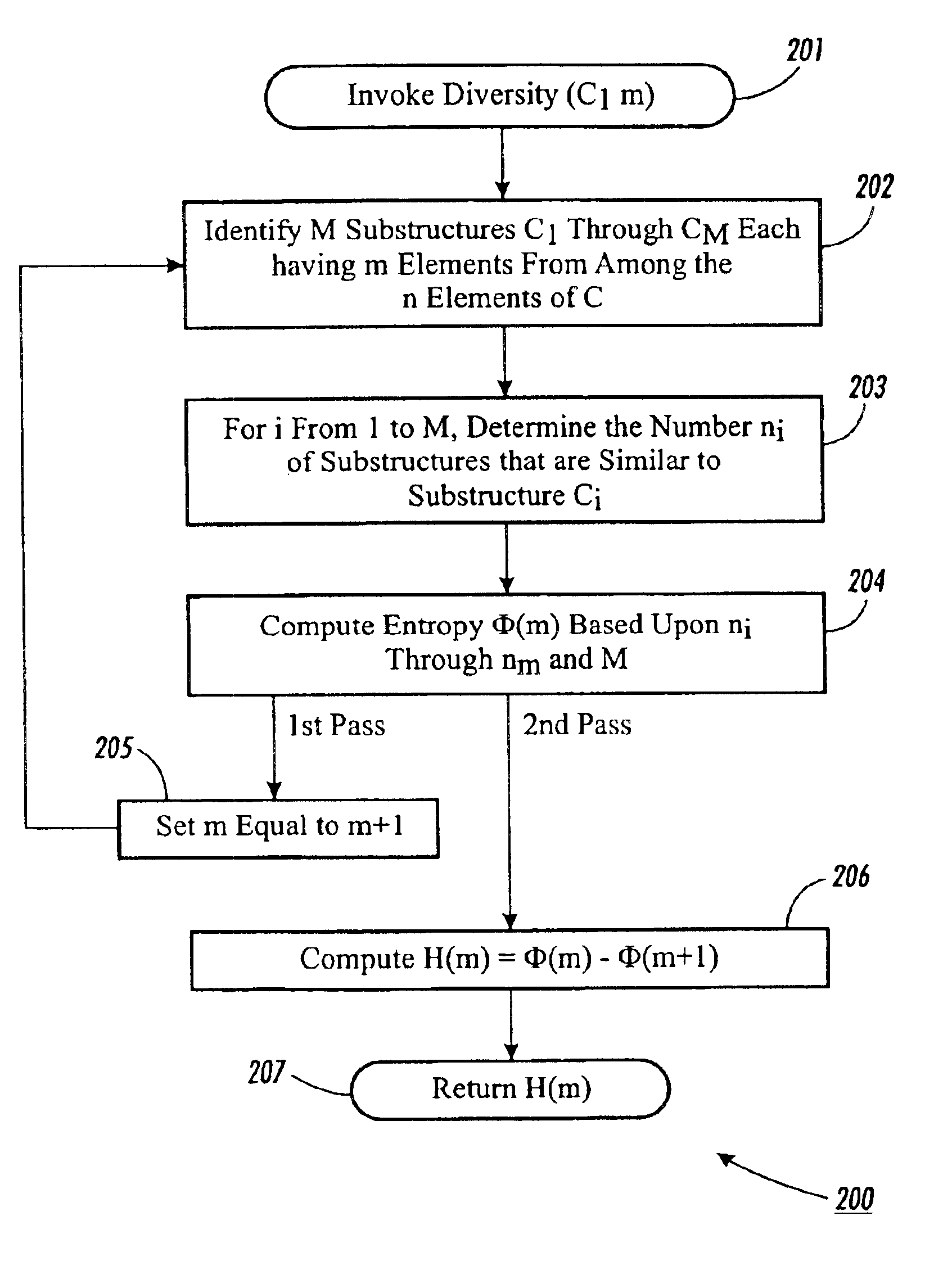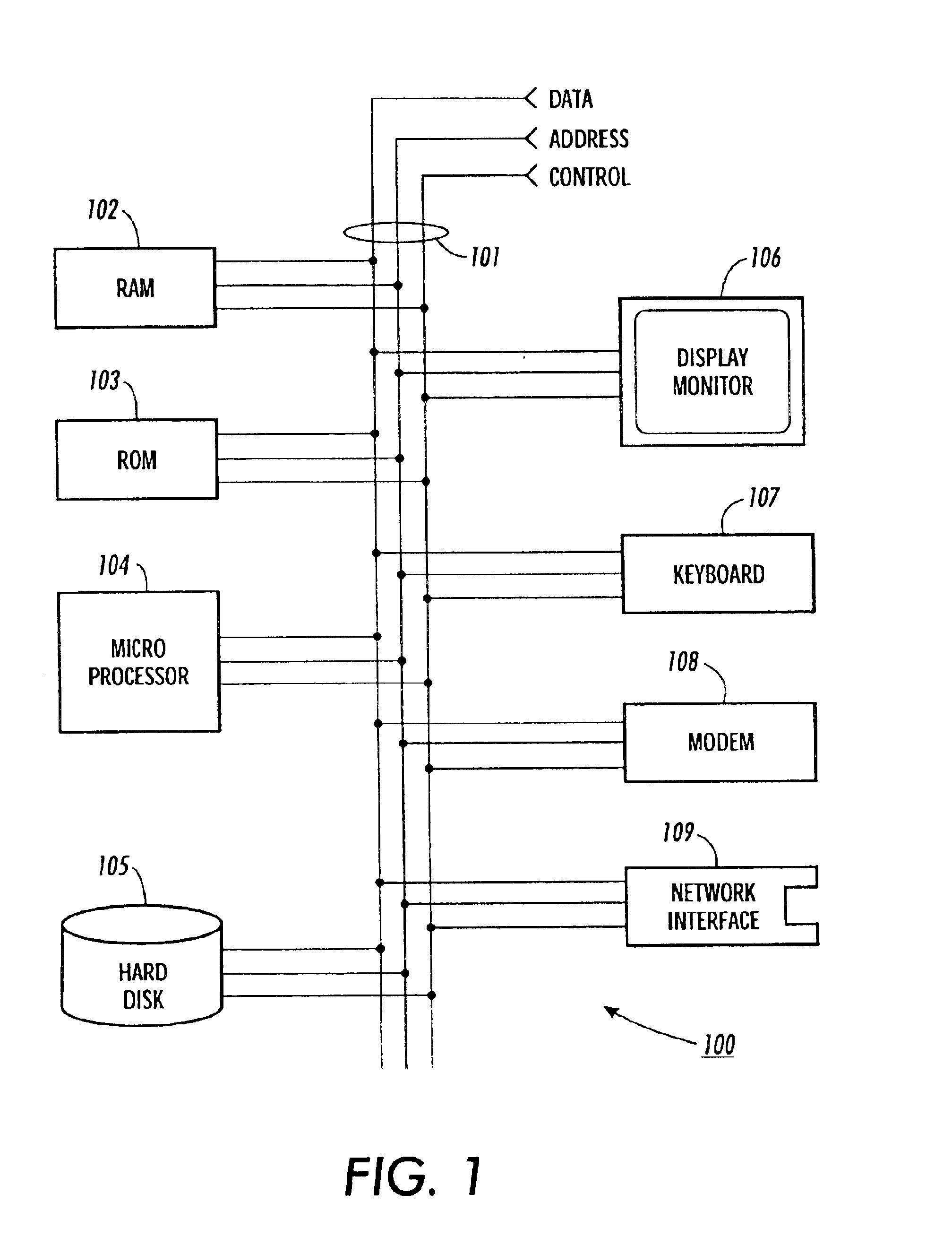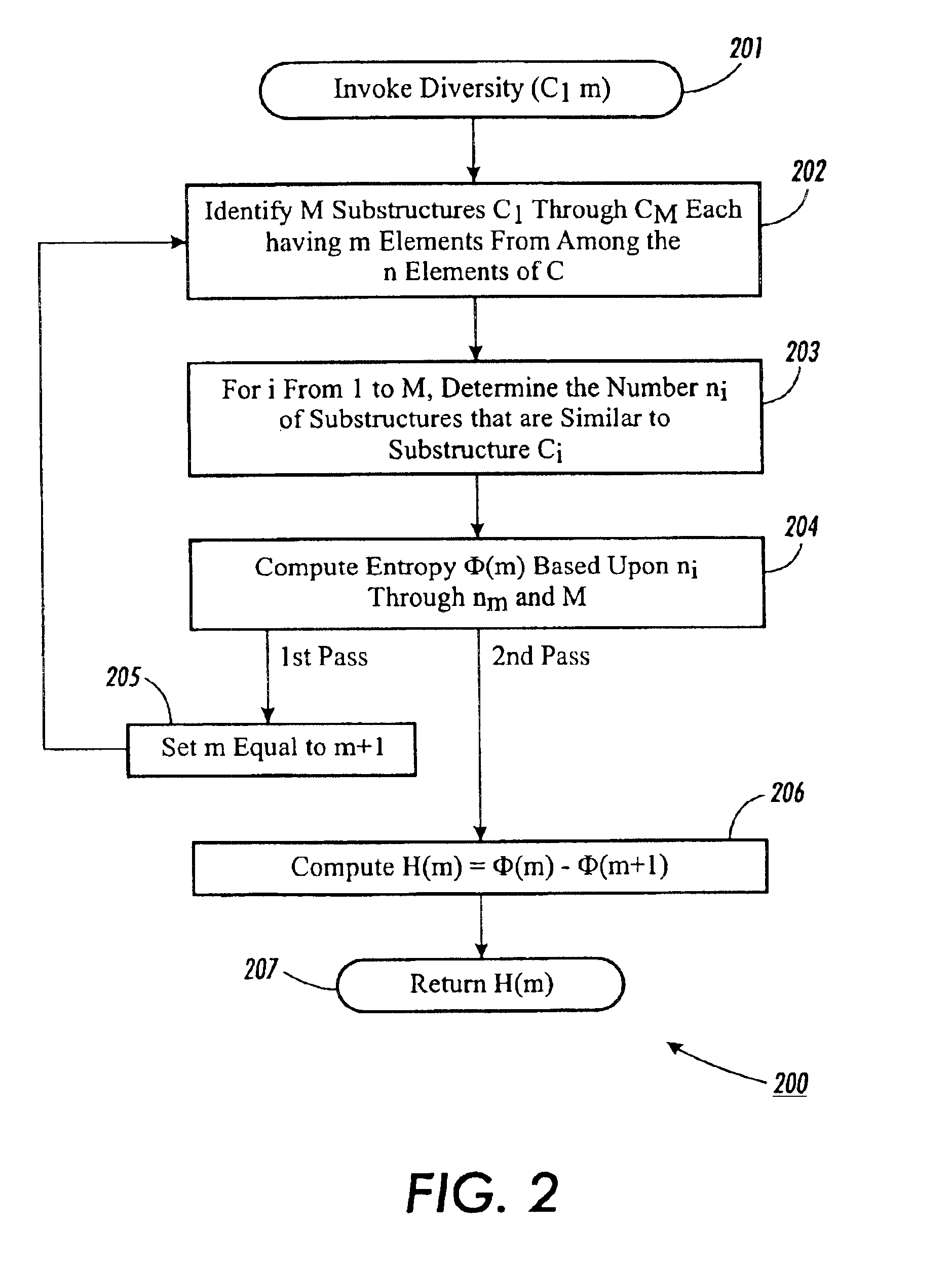Methods and apparatuses for measuring diversity in combinatorial structures
a technology of diversity and combinatorial structure, applied in the field of automatic analysis of combinatorial structure, can solve the problems of difficult quantification and measurement of diversity in combinatorial structure such as the web, limited type of structure, and inability to compute individual structures
- Summary
- Abstract
- Description
- Claims
- Application Information
AI Technical Summary
Problems solved by technology
Method used
Image
Examples
Embodiment Construction
vention.
[0025]FIG. 10 is a flow chart illustrating another method for performing the step of computing the entropy based upon ni through nM and M in the methods of the present invention.
[0026]FIG. 11 is a flow chart illustrating yet another method for performing the step of computing the entropy using expected frequencies for distinct substructures and based upon n, through nM and M in the methods of the present invention.
[0027]The Figures are more fully described in the Detailed Description of the Invention.
DETAILED DESCRIPTION OF THE INVENTION
[0028]From a practical viewpoint, identifying diverse parts of the Web is useful for finding starting points for searches or finding a variety of viewpoints on a topic. As agent-based Web services develop, maintaining diversity is applicable to help ensure a full range of possible services are considered.
[0029]However, a recently introduced concept of approximate entropy is generalized according to the present invention to application to comb...
PUM
 Login to View More
Login to View More Abstract
Description
Claims
Application Information
 Login to View More
Login to View More - R&D
- Intellectual Property
- Life Sciences
- Materials
- Tech Scout
- Unparalleled Data Quality
- Higher Quality Content
- 60% Fewer Hallucinations
Browse by: Latest US Patents, China's latest patents, Technical Efficacy Thesaurus, Application Domain, Technology Topic, Popular Technical Reports.
© 2025 PatSnap. All rights reserved.Legal|Privacy policy|Modern Slavery Act Transparency Statement|Sitemap|About US| Contact US: help@patsnap.com



